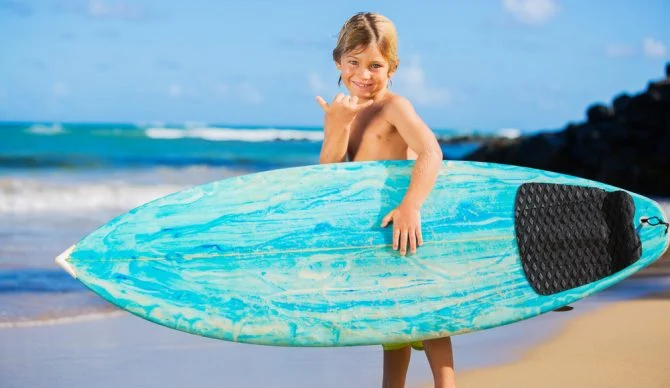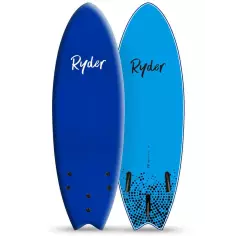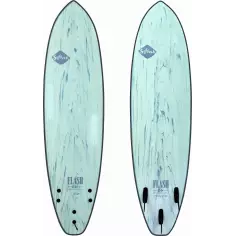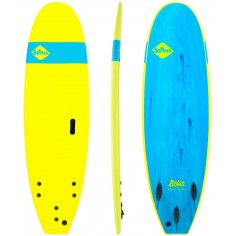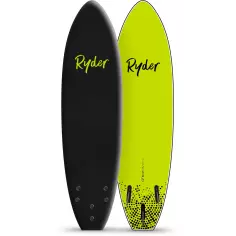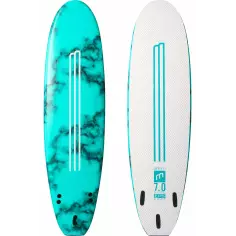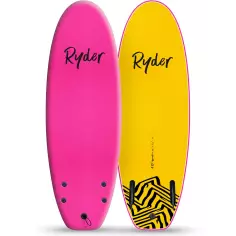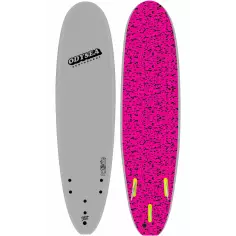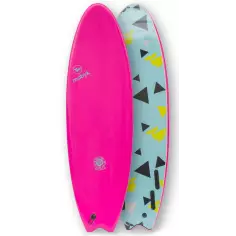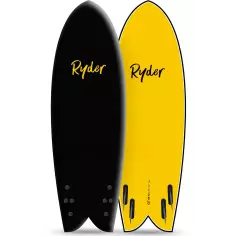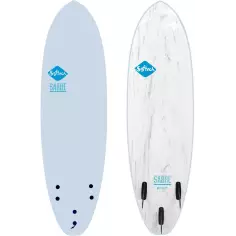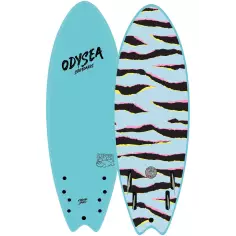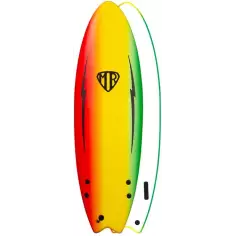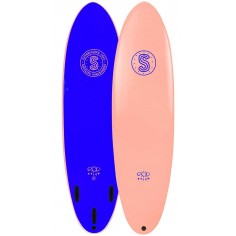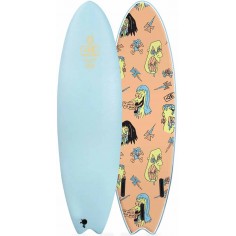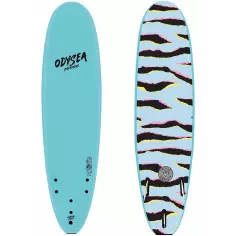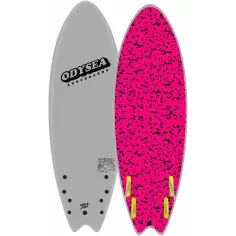The choice of a surfboard for a child is very important to get it right. With this, we will ensure that the child has fun and becomes completely hooked on this wonderful sport.
If we don't give it enough importance, we can make them frustrated by giving them a board that is either too big or too small for their skill level.
We must also keep in mind that depending on each child's level and motor skills, we will look for a specific type of board. And, of course, we will take into account the type of wave that each child will be riding.
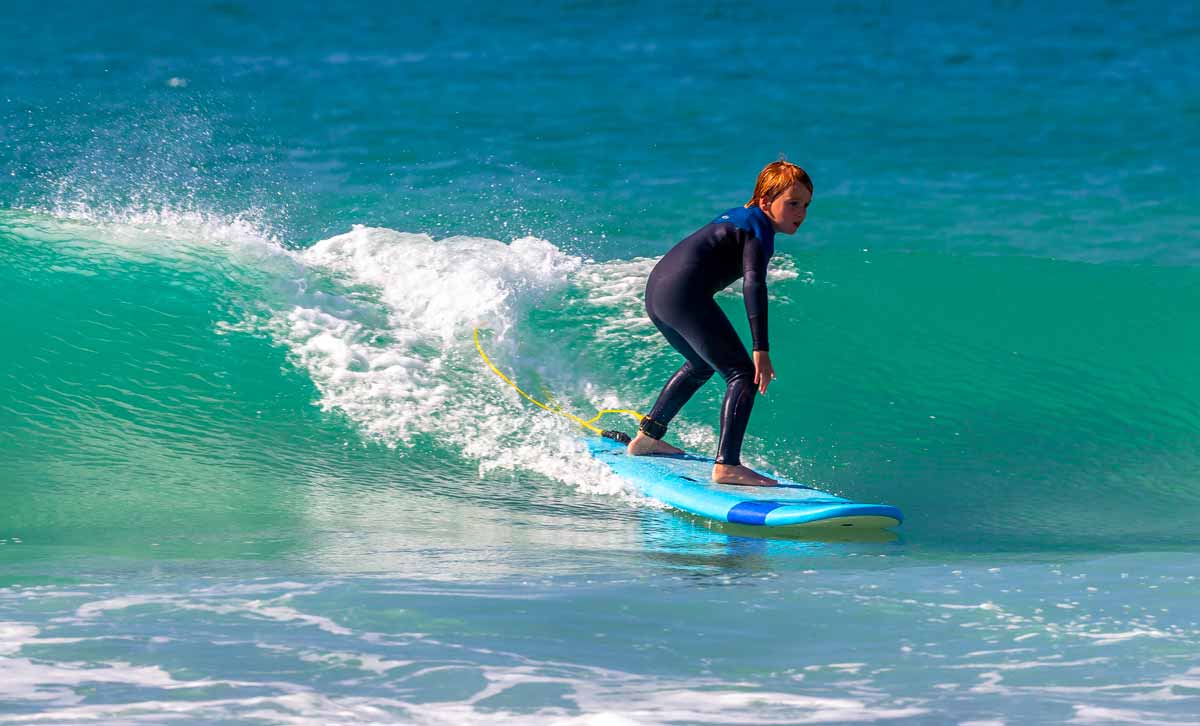
Daniel learning how to ride waves
Surfboards for beginner children:
Depending on each child's skill and size, we will always recommend a larger softboard surfboard compared to regular "grom boards." It's important to note that the most colorful board may not always be the most suitable, as other factors like size and volume are more important.
As a general rule, we will recommend a softboard around 7 feet in length. This size, combined with its large volume, will ensure that the child has fun and easily stands up on the board, riding the foam all the way to the shore. At this stage, our main focus is on fun and getting familiar with the water.
We should opt for a softboard because they are made of soft material and provide safety against any impact or falls. If the child has good stability or is smaller in size, we can choose a softboard around 6-7 feet.
The most important thing to know is to get them acquainted with the board and help them learn how to stand up on the wave.
Surfboards for intermediate children:
Once the child has gained enough stability to take off smoothly on a softboard without any assistance from an adult, we can choose a surfboard with lower volume and size. However, we still want to maintain good stability with the surfboard.
Now, our focus will shift towards the child being able to ride the wave face on both sides, generate speed on their own, and even perform some turns if possible.
We can achieve this with a smaller softboard, approximately 6 feet in length, such as the Ryder Fish, Ocean&Earth Softboard, The choice of board will depend on the child's age, weight, and skill level. These boards will still provide stability and assist with paddling, but their shorter length will allow the child to maneuver the board more easily, whether it's generating speed or making small turns.
Alternatively, we can also consider hard surfboards made of polyester or epoxy that are suitable for an intermediate level child.
These boards will be similar to softboards but with less volume and thickness, designed for those who have excellent stability or are progressing quickly. Examples of such boards include various brands' grom surfboards. All of these boards are specifically designed for children in terms of their size and volume.

Daniel pumping a left wall
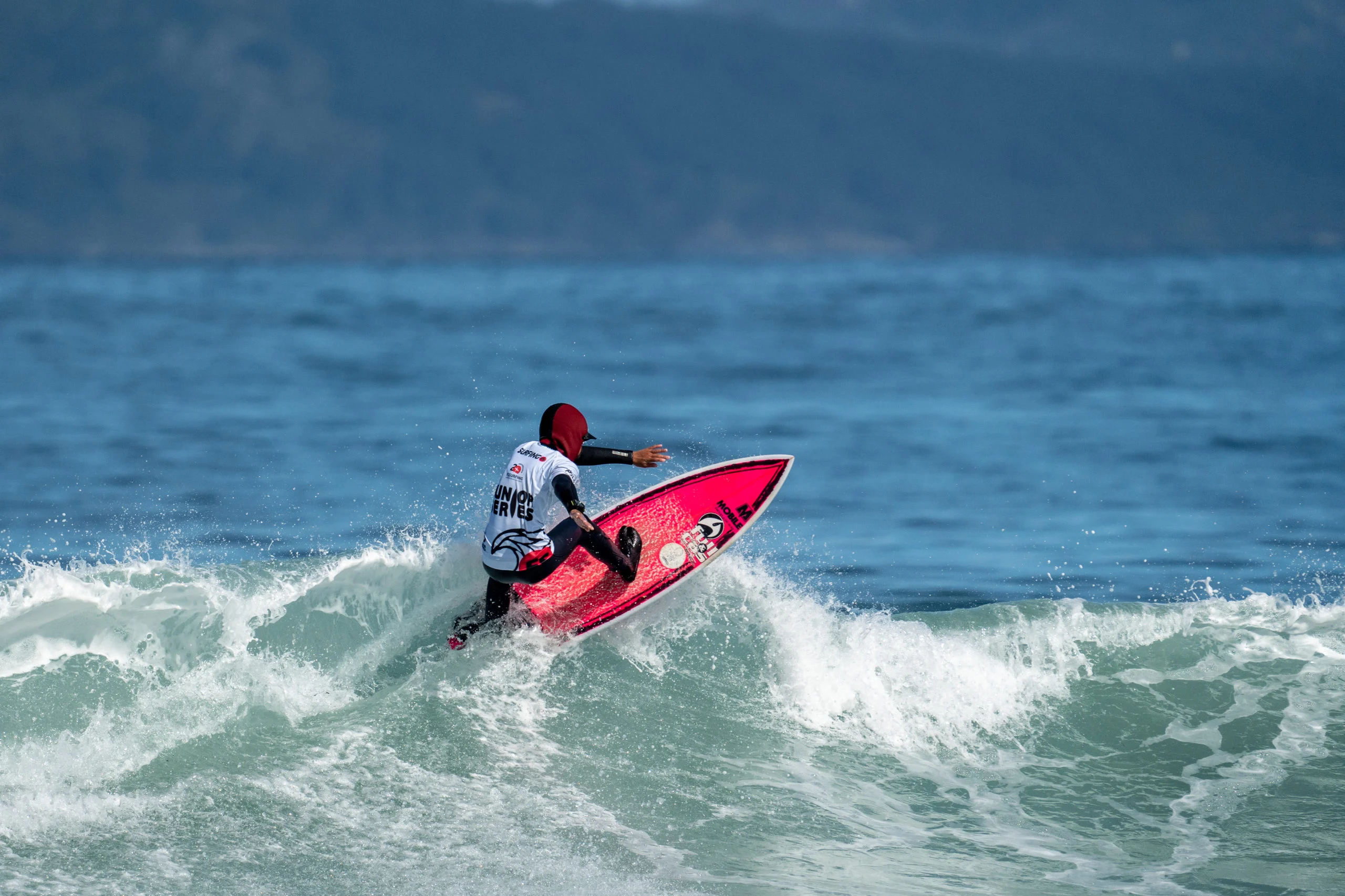
In competition, at an advanced level, performing a reentry
Surfboards for advanced children:
We are now in the final stage of a child's training. We have successfully reached a point where they can handle the waves on their own, paddling for left and right waves, pumping, and even performing some turns. It's time to look for a small high-performance board for them. These are top-level surfboards but in a reduced size.
They have very low volume and weight to allow for the best carving and fluidity possible on the wave. We will search for boards that enable them to maximize their surfing skills at their individual level. We can approach the search for these boards similarly to how we would for an adult, but considering the child's weight and height in relation to the required volume.
At this stage, we will always opt for polyester or epoxy boards, based on each individual's conditions and the type of waves they are surfing. Additionally, we will need a grom-sized grip pad, grom-sized surf fins, and a grom-sized surf leash. Everything should be tailored to the appropriate size for each child and board.
Knowing how to be in the water:
In addition to everything mentioned, it is crucial that as children progress and gain confidence in the water, they also become familiar with and respect the rules of surf priorities in the lineup. They should learn to read each wave, understand the sea conditions, identify rip currents, and interpret wave forecasts for surfing. Essentially, they should learn about everything related to being in the water while surfing. This knowledge is primarily acquired over the years and hours spent in the water, but it is essential for them to start becoming familiar with all this information.
Let's not forget that it should always begin as a game for them. They are children, and our priority is for them to have as much fun as possible, engage in outdoor activities, and develop an awareness of the surrounding nature in order to fully enjoy it.
Remember, there is and will only be one Kelly Slater, so do not pressure the child or yourself. Instead, try to convey your passion for surfing to the child.
Now you know how to choose the most suitable surfboard for a child. If you have any further doubts, feel free to reach out to us, and we will help you select the best option.
Products you may be interested in:

Sebas
Sebas is the passionate creator and founder of Mundo-Surf, a space dedicated to those who live and breathe surfing. With a deep connection to the ocean and an overflowing passion for every wave, Sebas has turned his love for surfing into a mission: to share, inspire, and educate the community.
In addition to being an avid surfer, Sebas is an expert in surfboard manufacturing, an art that combines technique and creativity. Through his blog, he not only offers guides, reviews, and advice but also shares his experience in surfboard creation, helping others understand the process behind each design and material. At Mundo-Surf, Sebas invites us all to discover surfing at its fullest, from the right equipment to the personalized creation of surfboards.




